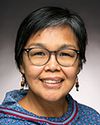First, Indian Oil and Gas Canada is our regulatory body. It's different from the Alberta Energy Regulator and the Canada Energy Regulator. They were supposed to be our fiduciary trustee, as well. Some of the problems that stem from their lack of enforcement have turned into litigation against the Crown.
First nations struggle through this. One, we had to learn the oil and gas sector very fast. When oil and gas is happening and our provinces are making billions of dollars, first nations have the opportunity to take advantage of it. Of course, federal money is not enough to service our communities. You all know that. Our founding fathers learned the hard way. They set up an opportunity for first nations to be part of this sector and to benefit, as well, not only through royalties but also through jobs and services. It has been very successful despite some of the social pathologies that come from having too much money.
At the end of the day, the regulatory body did not serve us well. We have orphaned and abandoned wells where IOGC did not keep companies accountable. We have miscalculation of oil and gas royalties, which are held in Ottawa and being disputed. We seem to more or less deal with regulators and individuals who are paternalistic and who impose a lot of systemic racism, not only internally but on our community leaders. They're very difficult to deal with. For example, for the site reclamation program that was initiated, they had no data on any of the oil and gas wells in our communities, in terms of what is abandoned, orphaned or active.
In my view, it's a special operating agency for people who want a government pension. They do their time there and don't act in our best interest. Some of the suggestions.... It's been mandated since 1996 to have a first nations-led energy regulator. We're back in the red zone, so to speak—for lack of a better term—trying to find a way to change that system.
IRC will not decide for first nations how they want to regulate their lands. We're at the point where we have to ask those questions and where first nations have to make a decision and assert their jurisdiction, not only on their community lands but in their traditional territories of Treaty No. 6, Treaty No. 7 and Treaty No. 8 here in Alberta and Treaty No. 4 in Saskatchewan. They have to start making land laws for themselves and working with industry and the provincial governments, because if you do it federally it is proven that it fails.
Progress, going forward, is first nations asserting their own jurisdiction with their land laws. My hope is this leads to a better system, where resource revenue sharing is at the forefront and on the table for all first nations with the extraction of natural resources in this country. We are rich in natural resources. First nations should have a better say about part of it, because depending on Indian Affairs money through the Comprehensive Funding Agreement is never enough.
To your previous question, we don't have the resources to move things along. Some of us don't have the money. It's very hard. If we obtain land through a purchase and have it added to our reserve, there's no money there to help us move it forward or move it quickly. If a minister decides this is going to be reserve land, the bureaucrats in the system hold up the whole process. It takes just one person not agreeing with the mandate moving forward. It's very tough and difficult.
To move things more quickly, don't get that type of government involved—the internals of Indigenous Services Canada. Ultimately, we're at the point where we have to find different ways to not depend on the government for our success and prosperity, and to get out of poverty. That's my mandate—to get a lot of our communities out of poverty. Natural resources are abundant and all around us. We have to do a better job. It's absolutely about working with both governments—federally and provincially—and with industry.
Thank you.





